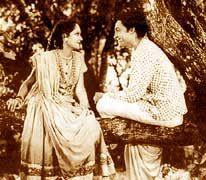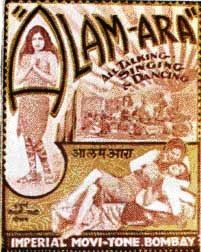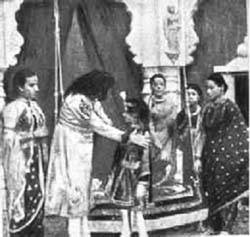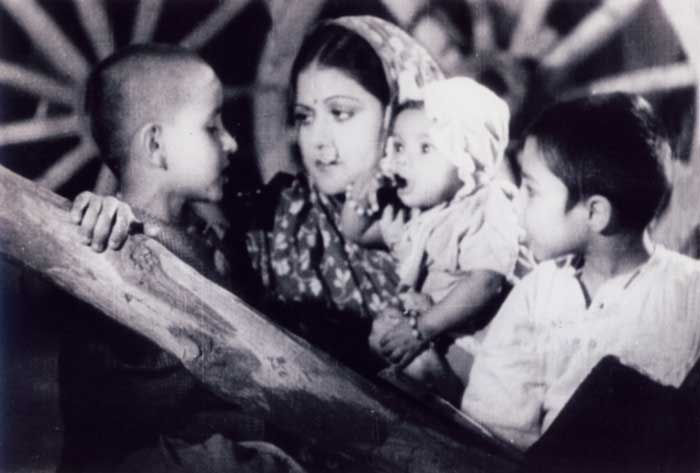History of Bollywood - Indian Cinema
Mumbai-based Hindi language film industry (most famously known as Bollywood) was born in the early years of the silent film resurgence in Europe and the United States. Fueled by the technical inventions of the west and the huge potential to easily entertain large amounts of people, India and surrounding regions quickly formed their bastions of movie production, which remain largely ignored by the rest of the world’s population for decades to come. As their popularity grew, movies created in the Mumbay’s reached the number of 200 annual movies, and birthing the nickname for this movie industry – Bollywood (similar nickname “Tollywood” was first taken by the cinema of West Bengal, but Mombay (Bombay) cinema fans soon adapted it). West continued to ignore the cinema efforts of Indian filmmakers, but they acknowledged them when India overtook America as the world's biggest producer of movies in the world.
From the first Bollywood movie ever created to today, Indian cinema used a mix of influences gathered from its long history, with a touch of outside trends taken from Hollywood and later on global Television channels. Six major influences made Bollywood what it is today:
- Tradition of Indian epics such as Mahabharata and Ramayana, especially their narrative styles (side story, back story, extensive sub-plots).
- Sanskrit theatre that was popular in India until the 10th century AD. This gave Bollywood movies a sense of spectacle, dance, music, and artistic gestures.
- Traditional folk theatre of India that became popular after the decline of Sanskrit theatre.
- Parsi theatre gave Indian movies a sense of humor, melodic song, elaborate dance routine, a mix of realism and fantasy, narrative, and stage spectacle.
- Hollywood, with the musicals and scope of production.
- Music television channels such as MTV brought profound changes in how Bollywood movies were produced after the 1900s.
The first full-length Bollywood silent movie, “Raja Harishchandra, “ was created in 1913 by Dadasaheb Phalke. Its great success paved the way for the countless movies that followed him and the expansion of the Indian cinema industry to incredible heights. Less than 20 years later, India was producing 200 movies per year. One of the largest successes of that time was “Alam Ara” from 1931, a sound movie that became the basis of the joyful modern Bollywood musical. However, quickly after its release, the country of India entered into a period of turmoil. The Great Depression, WW2, Indian Independence, and the violence of the Partition pushed filmmakers to start introducing serious themes into their movies, usually as backdrops to the plots of musicals and dramas. The first Indian color movie, “Kisan Kanya,” was created in 1937. Such movies found popularity only in the late 1950s and early 1960s.
As many historians remember today, the Golden Age of Indian cinema took place between the 1940s and 1960s. During that time, countless influential Bollywood movies were released, exploring new storytelling techniques, social themes (mostly struggles and wonders of urban life), epic productions such as Mother India (1957), reincarnation, and more. During this period, many Indian actors became popular (Dev Anand, Dilip Kumar, Raj Kapoor, Guru Dutt) and actresses such as (Nargis, Vyjayanthimala, Meena Kumari, Nutan, Madhubala, and others).
The 1960s gave birth to Modern Bollywood cinema, which was most easily spotted with the release avalanche of the two previously seldom-used genres – action and romance movies. This caused a resurgence of new movie stars, and by the 70s, gangster, and crime movies became popular. The 80s and 90s brought back into the spotlight musicals, family-centric romantic storylines, comedies, and stunt-based action films. Art films also strived, especially after the release of Ram Gopal Varma’s Satya (1998), which kick-started the genre of Mumbai noir (noir films exploring struggles of urban life).
In the new millennia, Bollywood finally reached outside India and landed in the West. Many of their lavish productions received significant box office success worldwide, especially after the critical success of “Lagaan: Once Upon a Time in India” in 2001.



